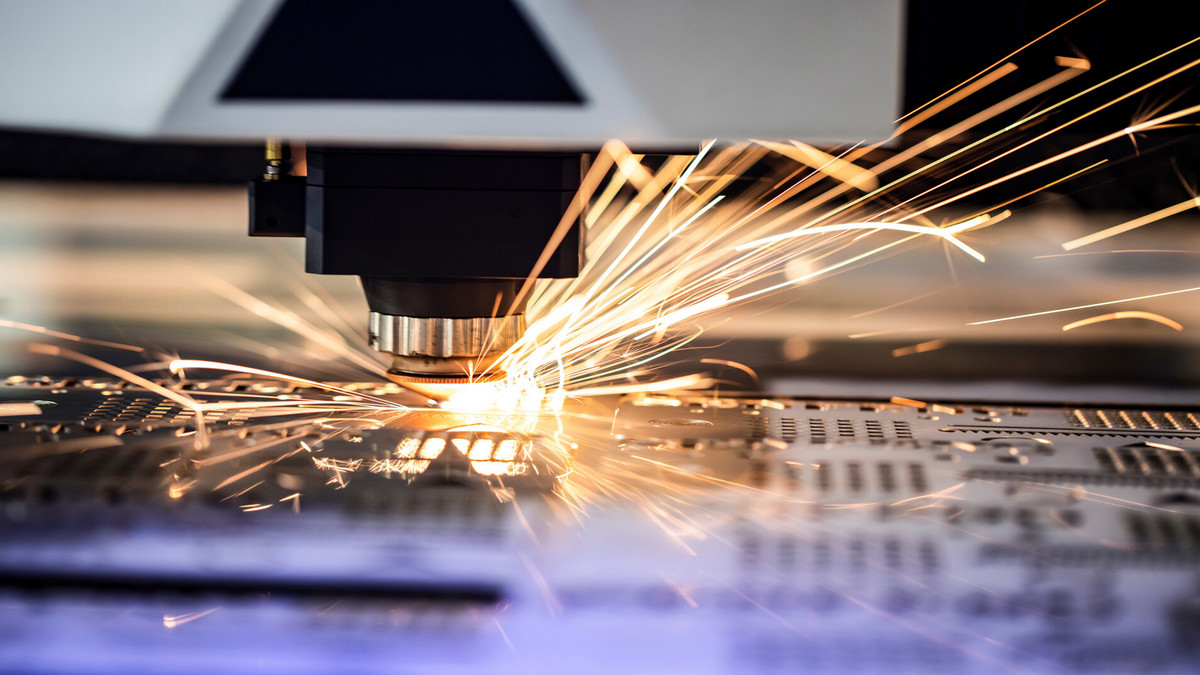Machine tool is based on the definition made by the International Standards Organization (ISO) and the American Machine Tool Fair (IMTS): "A device that is driven by power and cannot be carried by manpower. The combination of chemical or other methods to achieve the purpose of processing materials can be defined as a machine tool.” According to the different types of processing, the machine tool is divided into dozens of types, what are the differences among them?
Machine tools can be divided into two categories: metal cutting machine tools and metal forming machine tools according to their functions. Metal cutting machine tools covers machining machines, drilling machines, milling machines, grinding machines, planning machines, electric discharge machines, etc.; metal forming machine tools covers lathes, boring machines, punching machines, etc.
Lathe
A lathe is a machine tool that mainly uses a turning tool to turn a rotating workpiece. On the lathe, drills, reamers, reamers, taps, dies and knurling tools can also be used for corresponding processing.
Milling Machine
A milling machine refers to a machine tool that mainly uses a milling cutter to process various surfaces on a workpiece. Usually, the rotation of the milling cutter is the main movement, and the movement of the workpiece (and) the milling cutter is the feed movement. It can process planes, grooves, and various curved surfaces, gears, etc. A milling machine is a machine tool that uses a milling cutter to mill a workpiece. In addition to milling planes, grooves, gear teeth, threads and spline shafts, milling machines can also process more complex profiles, with higher efficiency than planers, and are widely used in machinery manufacturing and repair departments.
Drilling Machine
Drilling machine refers to a machine tool that mainly uses a drill to machine holes in a workpiece. Usually, the rotation of the drill bit is the main movement, and the axial movement of the drill bit is the feed movement. The drilling machine has a simple structure and relatively low machining accuracy. It can drill through holes and blind holes, replace special tools, expand, drill holes, ream holes or perform tapping and other processing. During the machining process, the workpiece does not move, the tool is moved, the center of the tool is aligned with the center of the hole, and the tool is rotated (main motion). The feature of the drilling machine is that the workpiece is fixed and the tool rotates.
Grinding Machine
A grinding machine (grinder) is a tool machine that uses abrasive tools to grind the surface of a workpiece. Most grinding machines use high-speed rotating grinding wheels for grinding, and a few uses of other abrasive tools such as oilstones, abrasive belts, and free abrasives for processing, such as honing machines, ultra-finishing tool machines, belt grinders, and grinding machines. polishing machine, etc.
Boring Machine
The boring machine mainly uses the boring tool to boring the existing prefabricated holes of the workpiece. Usually, the rotation of the boring tool is the main motion, and the movement of the boring tool or the workpiece is the feed motion. It is mainly used for machining high-precision holes or finishing multiple holes at one time, and can also be engaged in the machining of other machining surfaces related to hole finishing. Using different tools and accessories can also be used for drilling, milling, and cutting. Its machining accuracy and surface quality are higher than those of a drilling machine. The boring machine is the main equipment for processing large parts.
Planning Machine
A planning machine (planer) is a linear motion machine tool that uses a planer to plan the plane, groove or forming surface of a workpiece. Using planer processing, the tool is simpler, but the productivity is low (except for processing long and narrow planes), so it is mainly used for single-piece, small batch production and machine repair workshops, and is often replaced by milling machines in mass production.
Punching Machine
A punching machine (punch) is a punching press. In production, the stamping process saves materials and energy compared with traditional machining, has high efficiency, does not require high technical requirements for operators, and can make products that cannot be achieved by machining through various mold applications. are more and more widely used.







.png)






